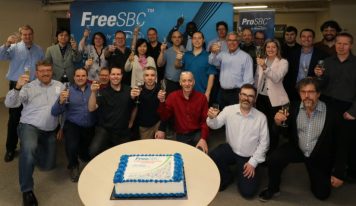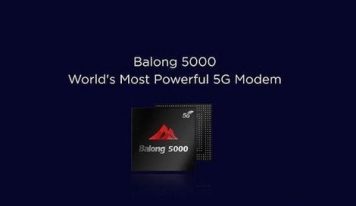I recently had the opportunity to ask Emmitt Wells of Getronics about their business and the direction they are taking as a company.
Please outline your new corporate initiatives
Getronics, building on its dominance in desktop managed services has developed a subscription model for communications/computing environment of the worker. The service, named Future-Ready Workspace incorporates the modular addition and selection of options that include: PDA/Smartphones, VOIP services, Core Communications like email, voicemail, etc… The result is a rapidly deployable optimized infrastructure. At the same time, Getronics wireless group has unveiled an architecture for wireless infrastructures that embodies survivability and security into an ongoing operations model. The architecture called WISDOM, incorporates the best of ITIL, ITO, IEEE and ISO standards in security and wireless. Other initiatives include further involvement in ITIL, ASL, and TOGAF as well as ongoing ‘green’ initiatives.
How is IP communications changing your company’s strategy?
IP isn’t so much changing our strategy. The applications that reside on a common protocol are enabling Getronics to be more flexible in the delivery of its services. Unified communications enable us to connect anywhere and at any time. Third generation collaboration software lets us meet ad hoc with video, white board, desktop sharing at the click of a button.
How has SIP changed communications?
IP by itself has not revolutionized communications. Setting it as a standard for call setup and tear-down has revolutionized the ability to add advanced IP telephony feature sets to better compete and in my opinion move ahead of standard PSTN.
What is the biggest request coming from your customer base?
Flash cutovers are few and far between. The biggest request that we get from our clients, is a seamless transition from their legacy telephony system to VoIP. The strength of success comes from the ability to support this transition and make both take holders and users comfortable with the new technology. Our biggest request is that of ongoing transitional support.
How are you answering their demands?
We have developed an offering that encompasses all needs of the client in Day Zero, One and Two support. We help our clients build a model of support that can be either performed in house or outsourced. This includes all level of services from Requirements Gathering, Design, Implementation, Management, and Training.
What do you think the future of the market is?
Just as wireless has become more prevalent in LAN environments, I think you are going to see more and more IPT implementations take advantage and augment their wired IPT deployments with wireless. As IPT set the standards bar, I think application developers have a wide open field to work with to bring advanced features and application into the everyday work and home environment.
How does the growth rate in the U.S. compare to the rest of the world?
The U.S. growth rate, depending on what you’re measuring, could be represented as a decline or increase in growth. Overall, we know the following are true and are happening: the U.S. remains the largest IT market; revenues in certain markets is declining or flat as price erosion fueled by off-shoring either out paces or offsets growth; connection points (ways to reach someone) per individual are up (email, IM, voicemail, text message); fixed lines are slowing eroding. As these conditions relate to rest of world, some nations have extremely high growth rates. The key to this are strong economic business policy requiring communications (wealth development) and laggard communications position. As a result China is likely the largest untapped potential.
What do you think of Google and Apple entering the telecom market?
I think Google is reaching a little beyond their niche. Only time will tell on how the market reacts to their entrance. I think Apple has the most to gain, even over Microsoft. Their brand seems to be taking off and with that has increased their research and development capital. The lines are becoming very blurred between application, desktop and network.
How about Microsoft?
See answer above.
How will wireless technologies change our market?
There is always going to be a debate related to security when it comes to discussing wireless technologies. Where I see the biggest impact is the customer facing and home markets. It is going to be a differentiator in how you offer services to your clients.
How will communications evolve over the next five years?
More and more device convergence. Our phones and desktop/laptops are going to become more alike and the capabilities that each will provide will become almost identical. Communications will continue to enhance the mobile worker and virtual workplace bringing more and more features. The scary part is that home and work life will continue to become more blurred. There will not be many more locations that you can just get away.
What sorts of things will we be hearing about during your presentation at ITEXPO?
My focus is in two areas. The first will be securing this move to the mobile workspace. As devices become smaller and more mobile, we began to trust our most protected data to these new technologies. My concern will be the same. Make sure security is interwoven into the very fabric of the mobile worker and not an after thought. Secondly, how do you plan for disaster if and when it strikes? BCDR takes on a whole new meaning as we expand out capabilities beyond the reaches of our data centers and internal facilities.
Why is your presentation a “Can’t Miss?”
See response above.
What do you want the industry to know about your company?
Getronics main focus to the market is our leading ability to support the user workspace any where and any time. Future Ready Workspace is our branded support model. Whether it is the traditional desktop support or advanced services in wireless or IP Telephony, Getronics brings to bear a set of life cycle services that can meet customer needs regardless of where they are in the process.
Please make one surprising prediction we will see in 5 years.
Looking in my crystal ball, I see a world that no longer uses the terms data, voice, or video. I think convergence will completely change our vernacular and the way we communicate. In five years, I see devices that are built into our cars and houses that allow us to do personal and company business anywhere anytime. I could even see devices that read you eye movements and voice inflection to perform common actions.





